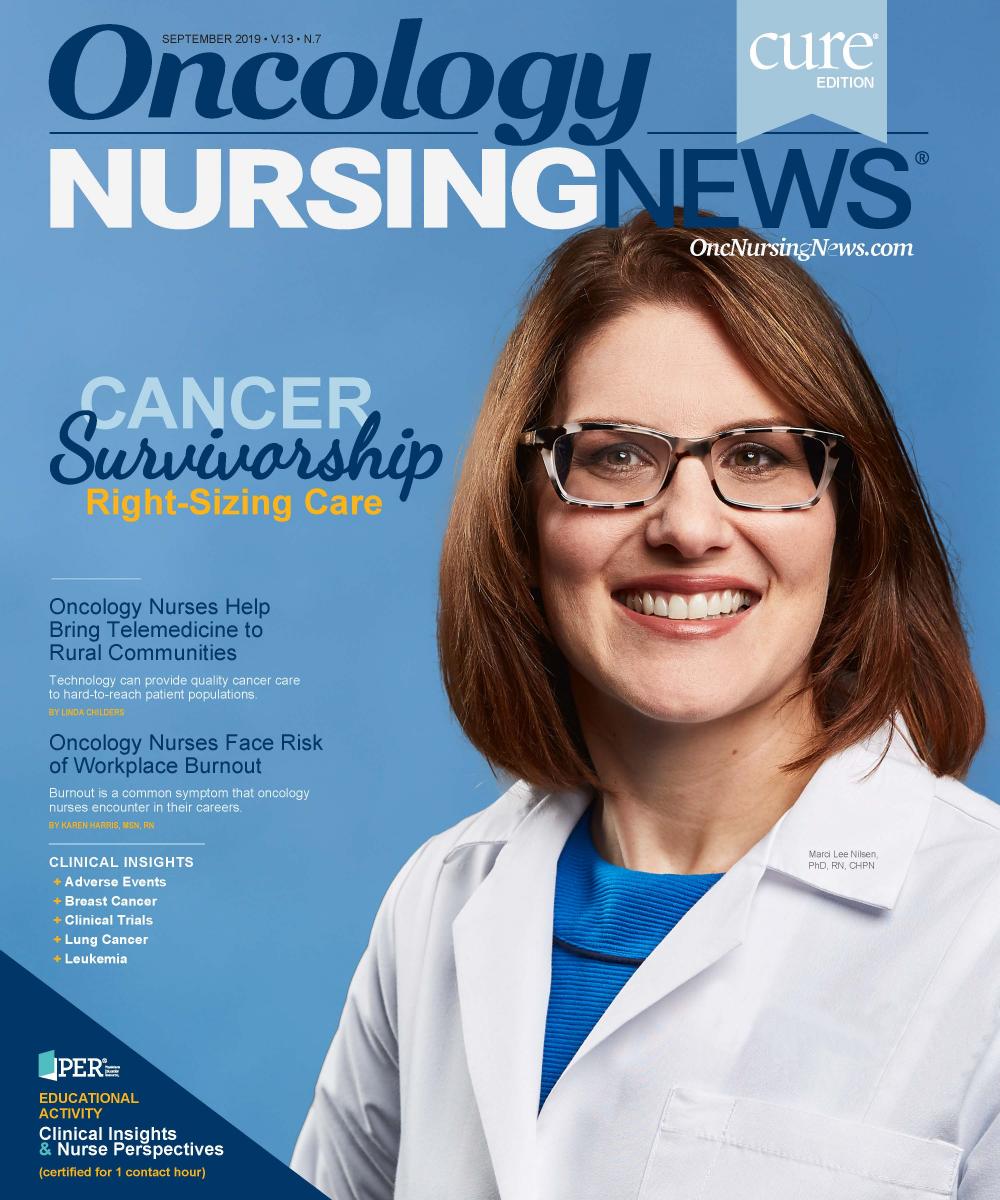Oncology Nurses Help Bring Telemedicine to Rural Communities
Getting a cancer diagnosis is a lifechanging experience for all patients, but for those who live in rural areas, receiving appropriate care and treatment can pose additional challenges.
Getting a cancer diagnosis is a lifechanging experience for all patients, but for those who live in rural areas, receiving appropriate care and treatment can pose additional challenges.
“Patients in rural areas have less access to specialists and are often diagnosed at a later stage in their disease,” says Karen Wickersham, PhD, RN, assistant professor at the University of South Carolina College of Nursing in Columbia. Wickersham discussed the differences between rural and urban breast cancer outcomes during her presentation at the 2019 American Society of Clinical Oncology (ASCO) Annual Meeting, shortly after the organization announced a new task force aimed at reducing disparities and improving outcomes for patients with cancer and survivors who live in rural communities.1
ASCO identified teleoncology as 1 of several areas where physicians and nurses could address broadband access, reimbursement policies, and other solutions that could improve remote access to cancer care. The National Cancer Institute projects that by 2026, the number of cancer survivors will rise from 15.5 million to 20.3 million2 and increased survivorship, combined with the rates of new cancer, will result in a major increase in the demand for cancer care.
“Digital health in cancer care is a very topical issue,” Wickersham says. “Telemedicine offers a way to improve access to specialists, screening, and prevention.”
Wickersham sees nurses working at the forefront of telemedicine and says that Australia has already successfully used nurses to deliver oncology care in rural areas. She believes Australia could serve as a model as the United States continues to develop more telemedicine programs.
EXPLORING NEW WAYS FOR NURSES TO CONNECT
Katherine Kim, PhD, MPH, MBA, assistant professor at the Betty Irene Moore School of Nursing at the University of California, Davis, has worked on a number of research projects exploring how telehealth can benefit patients in rural areas. One recent study examined how telehealth could be used for rural patients undergoing chemotherapy by monitoring symptoms and offering ongoing conversations and support surrounding their treatment.
“We developed software to be used with a smartphone or tablet, allowing oncology patients a direct connection to their care coordinator at the cancer center,” Kim says. “Nurse coordinators had the ability to answer questions or concerns that might arise between visits and provide patients with information on sleeping issues, nausea, and other concerns that often arise during chemotherapy.”
The telehealth software also allowed nurse coordinators to coordinate logistics for future oncology visits. “If [patients are] suffering from anxiety or depression, we might arrange for them to see a psychiatrist during their next visit,” Kim says. “By organizing in advance, they can make the most of their appointment, since they are traveling some distance to the cancer center.”
Another recent survey, Kim says, looked at how rural patients with multiple myeloma obtain information on their condition, how they choose their treatment, and what options might be put in place to help them with their decisions.
BRINGING CHEMOTHERAPY TO RURAL COMMUNITIES
At Sanford Cancer Center in Sioux Falls, South Dakota, patients from rural areas travel as far as 100 miles to receive chemotherapy. To help patients get treatment closer to home, Sanford Health launched a virtual infusion program last year.
“We utilize telemedicine technology to offer chemotherapy and other infusion treatments to patients at 3 virtual infusion centers located in rural communities,” says Susan Halbritter, CNP, of Sanford Cancer Center. “Medical staff at these centers provide chemo infusion treatments with oversight from a CNP [certified nurse practitioner] based remotely at the Sanford Health cancer center in Sioux Falls.”
During the 2 years leading up to the program’s launch, Halbritter says, the Sanford Health team trained staff at the rural centers on safety issues, standard operations, and prompt problem resolution, ensuring a seamless process. Only then were patients gradually transitioned from the main Sanford Cancer Center to a rural infusion center.
“One of our concerns was patients who might have an adverse reaction to their chemo infusion,” Halbritter says. “In the past, a nurse at a remote infusion center would stop the infusion at the first sign of a reaction and send the patient to the nearest emergency department just to be safe.”
Nurses can now call the Sanford Cancer Center CNP, who, using telemedicine, can observe the patient, listen to their heart and lungs, and determine when it’s safe to resume treatment. “In the past, an adverse reaction would have postponed their infusion treatment,” Halbritter says. “Today, there are very few treatments that can’t be completed. We work with rural nurses to intervene promptly in the event of an adverse reaction, get the patient back to their baseline, and continue their chemo infusion.”
References
- ASCO announces new task force to address rural cancer care gap [press release]. Alexandria, VA: American Society of Clinical Oncology; April 10, 2109. asco.org/about-asco/press-center/news-releases/asco-announces-new-task-force-address-rural-cancer-care-gap. Accessed July 2019.
- Cancer statistics. National Cancer Institute website. cancer.gov/about-cancer/understanding/statistics. Updated April 27, 2019. Accessed July 2019.




